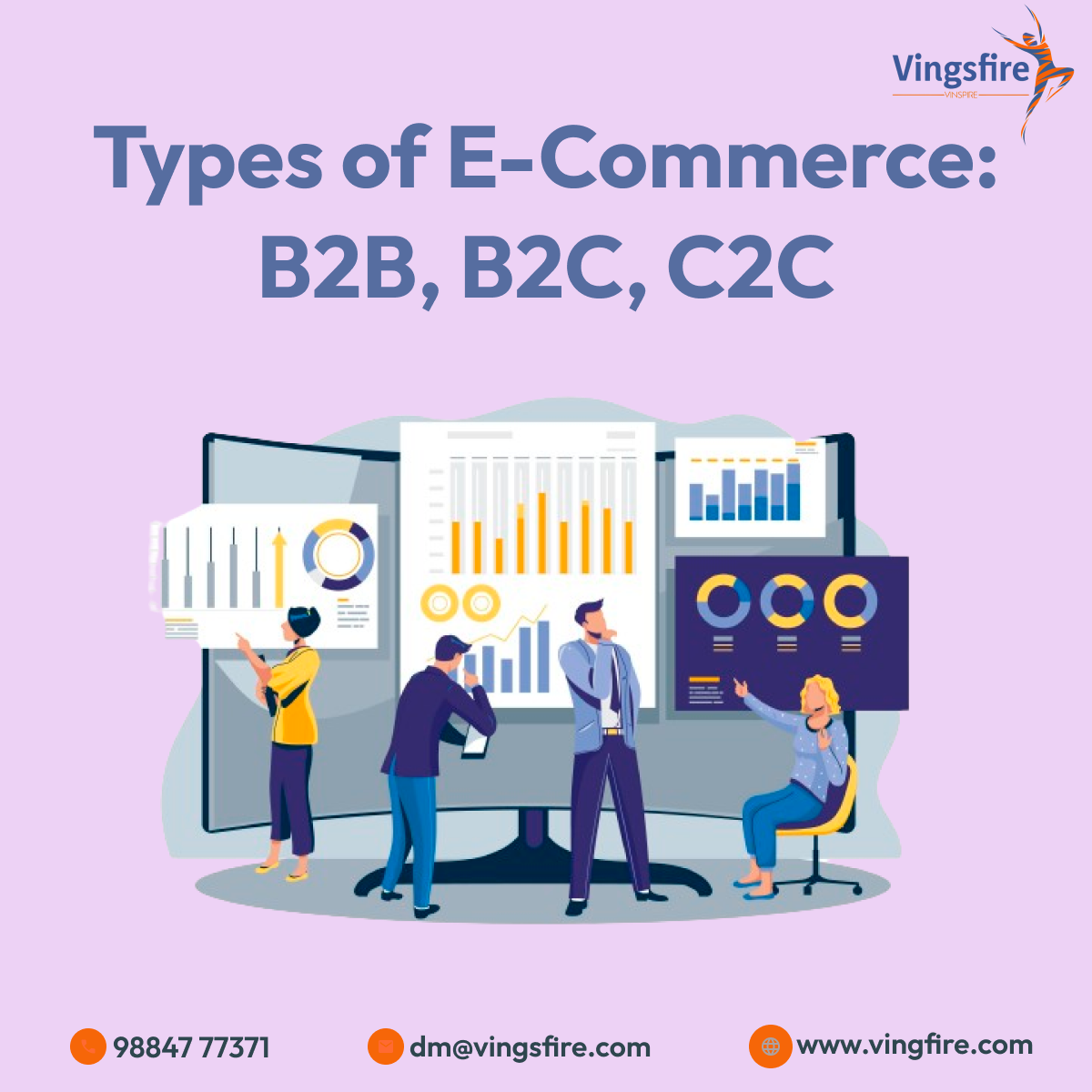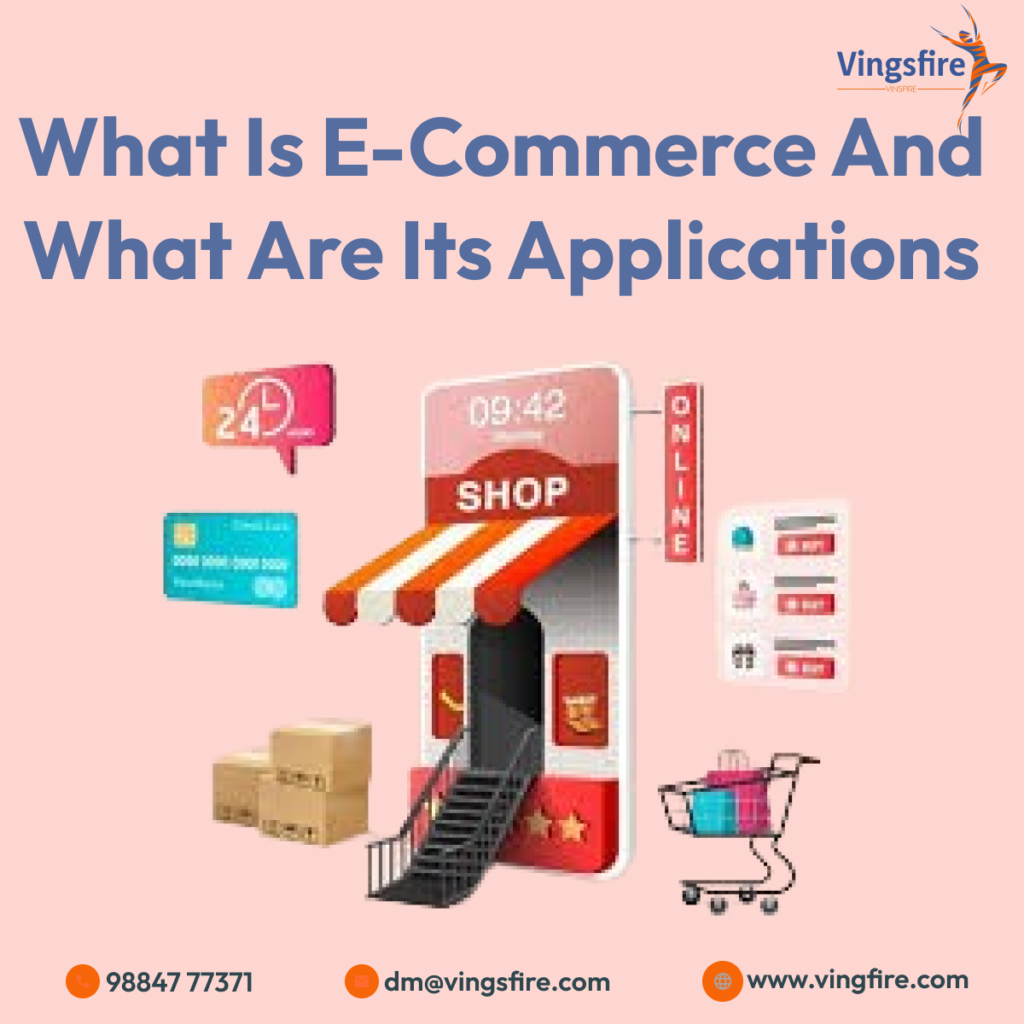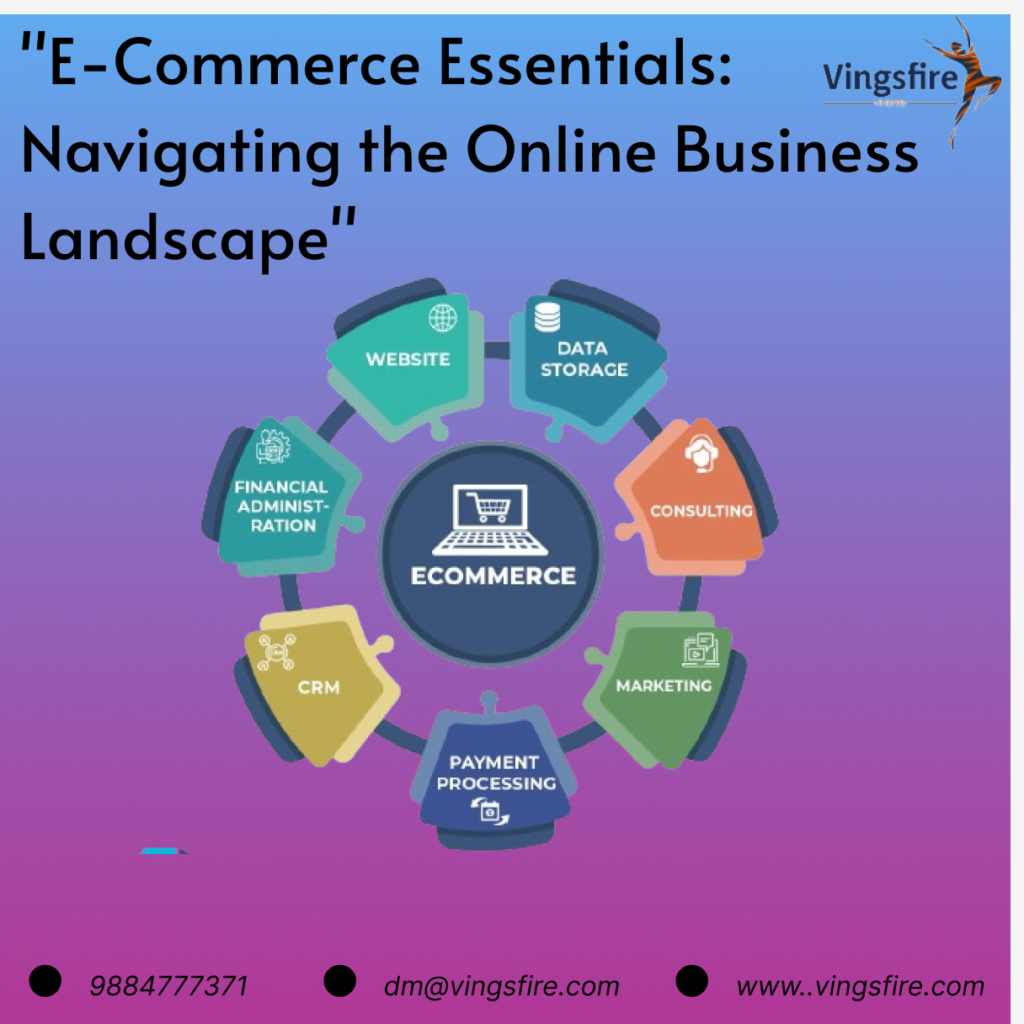Introduction :
In the ever-evolving world of business, electronic commerce, or e-commerce, has become a cornerstone for global trade. This digital phenomenon has revolutionized the way businesses operate and consumers shop. One of the key distinctions in the e-commerce realm lies in the types of transactions that take place. In this blog, we will delve into the intricacies of three major types of e-commerce: Business-to-Business (B2B), Business-to-Consumer (B2C), and Consumer-to-Consumer (C2C).
Learn More About Vingsfire:
1.LINKEDIN
2.FACEBOOK
Business-to-Business (B2B) E-Commerce :
B2B e-commerce is the backbone of the global supply chain, facilitating transactions between businesses. In this model, companies engage in trade, procurement, and collaboration with other businesses. This type of e-commerce streamlines processes, reduces costs, and fosters efficient communication between entities. Key players in B2B e-commerce include manufacturers, wholesalers, and distributors.
complex business transactions, improving overall efficiency. This leads to enhanced productivity, reduced errors, and quicker decision-making processes. Additionally, B2B platforms often incorporate advanced features such as bulk ordering, customized catalogs, and seamless integration with enterprise resource planning (ERP) systems.
Business-to-Consumer (B2C) E-Commerce :
B2C e-commerce is the most recognizable form of online trade, involving transactions between businesses and individual consumers. This type of e-commerce has witnessed exponential growth with the rise of online marketplaces, retail websites, and mobile shopping applications. B2C transactions cover a wide array of products and services, from electronics and apparel to digital subscriptions and virtual experiences.
In the B2C model, companies focus on creating user-friendly interfaces, optimizing the online shopping experience, and implementing secure payment gateways. Personalization and targeted marketing are key strategies to attract and retain customers. Moreover, B2C e-commerce thrives on customer reviews and feedback, influencing the purchasing decisions of potential buyers.
Consumer-to-Consumer (C2C) E-Commerce:
C2C e-commerce involves transactions between individual consumers, where one person sells products or services directly to another. Online platforms and auction websites have played a pivotal role in popularizing C2C transactions. This type of e-commerce is characterized by its peer-to-peer nature, enabling individuals to buy and sell pre-owned goods, handmade crafts, or even offer services.
C2C platforms typically provide a marketplace for users to create listings, set prices, and engage in direct communication. Examples of C2C e-commerce include online auction sites, classified advertisements, and peer-to-peer lending platforms. Trust and reputation are crucial in C2C transactions, as buyers often rely on the experiences of previous customers when making decisions.
Advantages:
Global Reach:
Access to a Wider Market: E-commerce enables businesses to reach a global audience, breaking down geographical barriers and expanding their customer base beyond traditional brick-and-mortar limitations.
24/7 Availability: Online stores operate 24 hours a day, seven days a week, providing customers with the convenience to shop at any time, irrespective of time zones or business hours.
Cost Efficiency:
Reduced Overheads: E-commerce eliminates the need for physical storefronts, reducing costs associated with rent, utilities, and maintenance.
Streamlined Operations: Automation of processes, such as order fulfillment, inventory management, and payment processing, helps businesses operate more efficiently and reduces the need for extensive manpower.
Convenience and Accessibility:
Convenient Shopping Experience: E-commerce allows consumers to shop from the comfort of their homes, saving time and effort associated with traditional shopping methods.
Multiple Access Points: Consumers can access online stores through various devices, including smartphones, tablets, and computers, enhancing accessibility and convenience.
Conclusion:
In the vast landscape of e-commerce, understanding the nuances of B2B, B2C, and C2C transactions is paramount for businesses and consumers alike. Each type brings its own set of advantages and challenges, shaping the digital marketplace and influencing the future of commerce. As technology continues to advance, these e-commerce models will likely undergo further evolution, opening new avenues for innovation and collaboration in the global marketplace.












